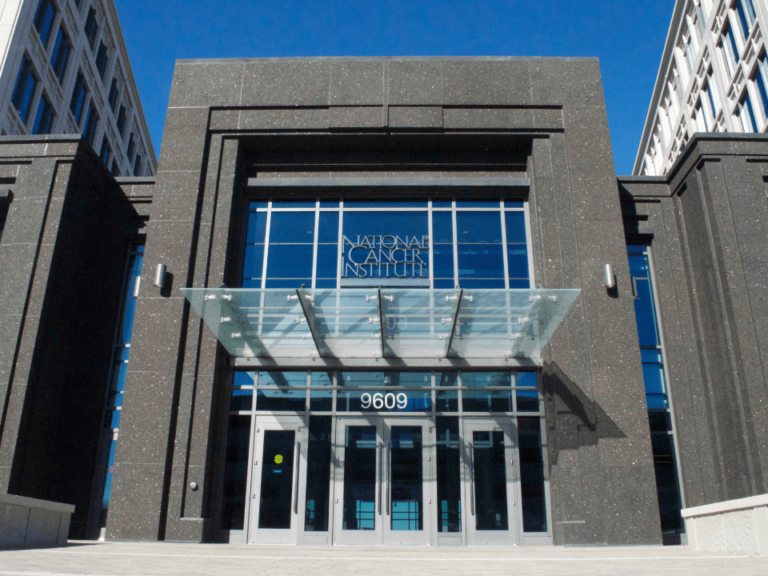Gerald E. Hanks was a giant in the world of radiation oncology and oncology in general. It isn’t often that we can say this and probably understate a person’s significance and influence, but Jerry was one of those people. He died on Dec. 20, 2017, at the age of 83.


For those of us who were privileged to know him, work with him, learn from him and call him a friend, he will truly be missed. For many of us, caring for patients and hopefully curing their cancer is more than enough for our careers. But for Jerry, this was just the beginning.
Dr. Hanks was born in Ellensburg, Washington. He graduated from Washington State College with a basketball scholarship and received his medical degree from Washington University in St. Louis. For generations, radiation oncology was not a separate medical specialty. During radiology training, if you were interested in treating people’s cancer with radiation, you became a therapeutic radiologist.
By the 1960s, the NCI recognized that this probably wasn’t the best way to train physicians dedicated to oncologic care. Jerry Hanks, along with Zvi Fuks and Malcom Bagshaw, became one of the first three residents in the United States to be trained specifically as a radiation oncologist at Stanford University. After completing his residency, Jerry subsequently held academic faculty appointments at Stanford, the University of North Carolina, The University of California Davis, the University of Pennsylvania and Fox Chase Cancer Center in Philadelphia.
From 1971-1985, he practiced radiation oncology at the Radiation Oncology Center in Sacramento, Calif. where he provided leadership for a strong private practice radiation oncology program and successfully introduced clinical research into the community setting.
He returned to academic medicine in 1985 and served as chairman of the Department of Radiation Oncology at Fox Chase for 16 years until 2001, when he retired from medicine. He is credited with establishing the department’s national prominence, and was honored by Fox Chase with the creation of the Gerald E. Hanks, MD, endowed chair in radiation oncology.
Dr. Hanks was the author of more than 300 scientific publications with a primary focus on prostate cancer. He held numerous important leadership positions in the American Society of Radiation Oncology, the American Radium Society, and the American College of Radiology and the Radiation Therapy Oncology Group. He was president of ASTRO and ARS. He was a member of the Board of Chancellors and chair of the Commission on Cancer and the Committee on Radiation Oncology Practice Accreditation of the ACR. During his service to ASTRO and the ACR, he played a critical role in preserving a single voice for radiation oncology and diagnostic radiology at a time of great change in health care practice. He received many honors including Gold Medals from ASTRO and the ACR.
I was talking about what an incredible person Jerry was with my family the other day, and my son asked me what was it that made Jerry so important in the field of radiation oncology. After thinking about it for a few minutes, I told him that Jerry basically developed and put into practice the way to safely deliver higher doses of radiation more precisely, thereby curing more cancers with fewer side effects.
This technique was called 3D conformal radiation therapy and it revolutionized the practice of radiation oncology in the 1980s and 1990s. It was first used to treat prostate cancer, but was subsequently used to treat many cancers including head & neck, lung, gastrointestinal and gynecologic malignancies. 3DCRT paved the way for even more precise techniques, including intensity modulated radiation therapy and stereotactic body radiation therapy, which we all routinely use today to treat people around the world with all different types of cancer.
At Fox Chase, his technology advancements included the first routine use of CT and MRI in planning radiation treatment in the United States and the use of ultrasound to improve the accuracy of each daily treatment.
And if that wasn’t enough, he also pioneered the use of evidence-based outcomes to develop more effective ways to treat many different kinds of cancer with radiation, beginning in the 1970s as a leader of the Patterns of Care Studies and the Radiation Therapy Oncology Group.
The Patterns of Care studies were the first of their kind in an oncology specialty. They surveyed patterns of care in radiation oncology in the United States beginning in 1973, defined national standards for clinical care and reported outcome of treatment for various malignancies. These efforts prompted other specialties to undertake national quality assurance programs, with the assistance of technology developed by the Patterns of Care.
Dr. Hanks devoted his medical career to improving the outcome of men with prostate cancer. His legacy continues with the many residents and faculty he trained and mentored and whose careers he promoted as well as the many men who benefited from his innovative and visionary clinical research. These are just a few things that his colleagues sent me about Jerry after learning of his passing:
“Knowing this day would come doesn’t lessen the impact. We have lost a true giant in the field, and one who caringly supported the development of his trainees and faculty. He set an example for us all. He will be sorely missed.”
“He impacted all of our lives in a grand way. He was a special and selfless soul, gentle and kind, and will be missed by all who were fortunate to know him. He launched my career as a statistician in cancer research, and provided me with invaluable mentorship. I have never worked with, or known anyone else, quite like him.”
“Jerry was my first boss and I am grateful for everything that he taught me… mostly about life.”
I would be remiss if I didn’t mention some of the other things important to Jerry, beginning with college basketball (especially the Washington State Cougars) and football. He could talk for hours with anyone about detailed strategy and standings and he loved to go to games. He tried to introduce some culture to our department with wine tastings (always on a Friday). He, himself, was a survivor of prostate cancer.
He is survived by his wife Dr. Barbara Fowble, four children (Dr. Stephen Hanks, Michael Hanks, Kimberly Hanks, and Leslie Hanks Angelacci), ten grandchildren and one great grandchild.
The author is the holder of the Gerald E. Hanks Chair of Radiation Oncology, and is a professor and chair of the Department of Radiation Oncology at Fox Chase Cancer Center.












